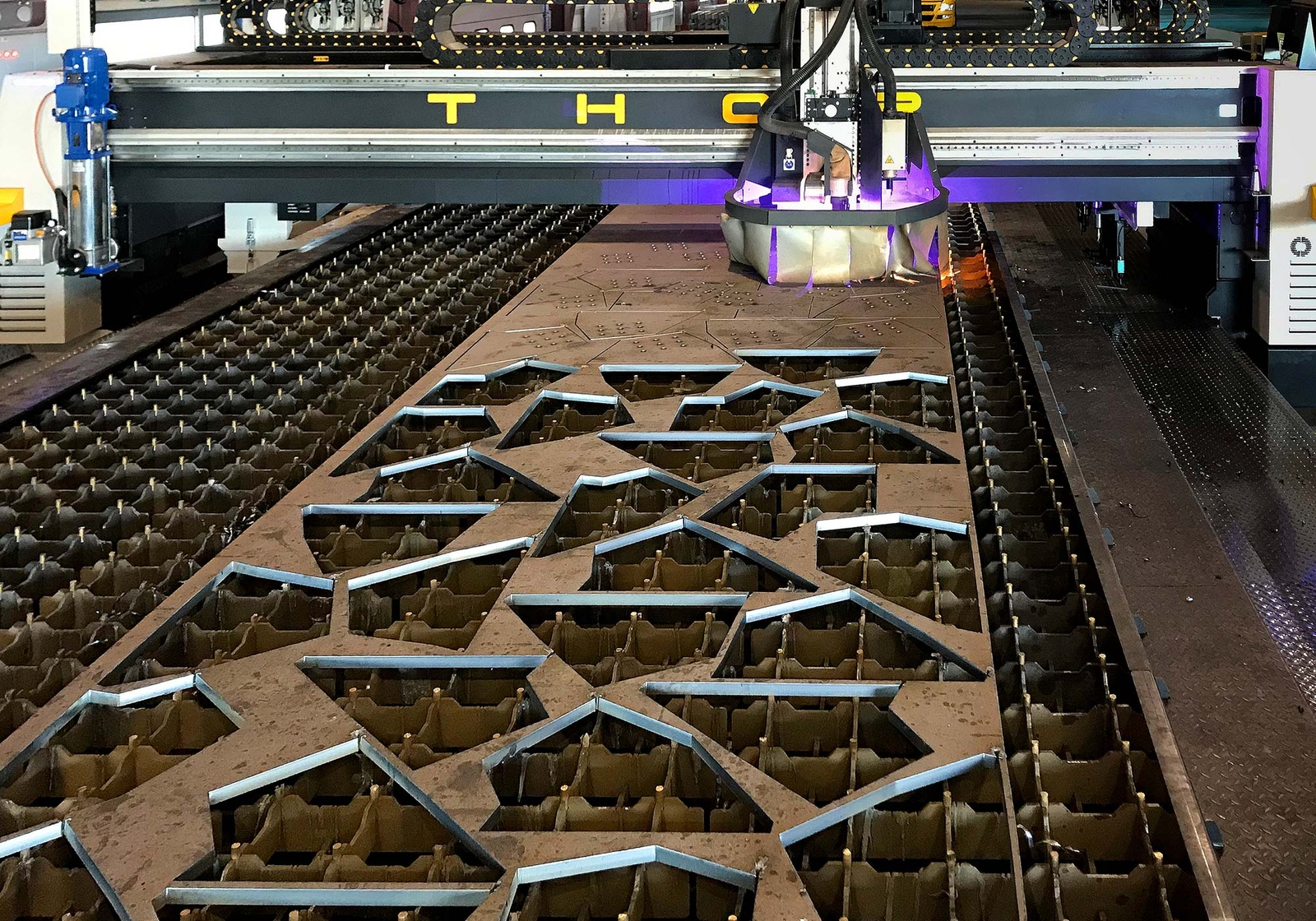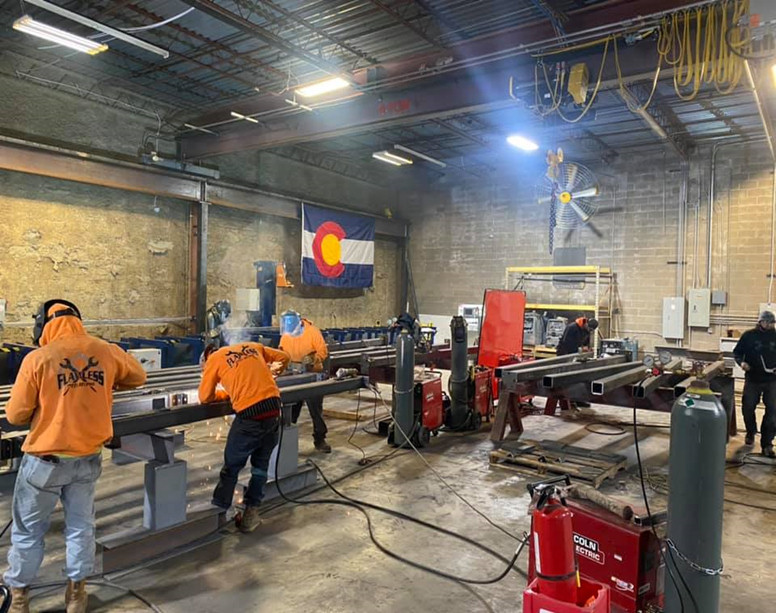Advanced Steel Fabrication Melbourne: Building the Future Today
Wiki Article
Comprehensive Analysis of Cutting-Edge Techniques in Steel Construction Industry
As the steel manufacture sector continues to develop, the combination of sophisticated strategies has become necessary for remaining affordable and meeting the demands of modern production criteria. In this dynamic industry where innovation plays a crucial role, understanding the subtleties of these cutting-edge techniques is not just an option but a necessity for those looking to create in advance in the ever-evolving globe of steel fabrication.Laser Cutting Developments
In the world of steel manufacture, laser reducing innovations have actually changed the accuracy and efficiency of metal shaping procedures. By taking advantage of the power of focused laser beams, suppliers can now achieve unrivaled levels of precision when reducing with different kinds of steels. This modern technology allows elaborate layouts to be executed with minimal product wastefulness, making it a cost-efficient solution for sectors needing high precision elements.One of the vital advantages of laser cutting is its ability to take care of a variety of materials, consisting of stainless-steel, aluminum, and carbon steel, with ease. The procedure produces tidy, burr-free edges, eliminating the need for added completing steps. Furthermore, the non-contact nature of laser reducing reduces the threat of material contamination, leading to higher top quality final product.
Additionally, laser cutting makers can be configured to make swift, precise cuts, dramatically minimizing production time contrasted to conventional reducing methods. This rate and precision make laser cutting especially suitable for mass production settings where efficiency is critical. As technology continues to breakthrough, laser cutting is poised to play a significantly important duty in the steel fabrication industry.

CNC Machining Innovations
The advancement of CNC machining technologies has ushered in a new age of accuracy and performance in the steel manufacture industry. Computer Numerical Control (CNC) devices have reinvented steel manufacture by supplying unrivaled accuracy and repeatability in the manufacturing process. steel fixing. Among the vital innovations in CNC machining is the integration of advanced software systems that enable real-time monitoring and adjustments, leading to enhanced productivity and quality assuranceFurthermore, the advancement of multi-axis CNC machines has actually enabled the construction of complicated steel components with intricate designs that were formerly testing to create. These devices can perform a vast array of machining procedures, including milling, drilling, transforming, and grinding, all with high degrees of precision.
Additionally, the incorporation of automation and robotics in CNC machining has structured production processes, lowered preparations, and reduced the margin of error. This assimilation of innovative technologies not just improves efficiency yet likewise guarantees consistent high quality across all made steel parts. Finally, CNC machining technologies remain to drive improvements in the steel fabrication market, establishing new requirements for accuracy and performance.
Automated Welding Technologies
Automated welding technologies have changed the steel manufacture industry, enhancing efficiency and accuracy in the welding process. These innovative modern technologies utilize computer-controlled systems to automate the welding procedure, resulting in higher performance degrees and improved weld high quality. One of the key advantages of automated welding is the ability to perform complicated welds with constant accuracy, decreasing the likelihood of errors and revamp.Robotic welding systems are at the forefront of automated welding technologies, supplying exceptional speed and precision. These systems can deal with a variety of welding jobs, from easy to detailed, effortlessly (steel fabricators melbourne). By utilizing innovative sensors and software, robotic welders can adapt to variations in material and joint geometry, guaranteeing an uniform and trustworthy weld
In addition, automated welding technologies enhance workplace safety by minimizing the exposure of human welders to hazardous fumes and extreme heat. As the steel construction industry remains to advance, incorporating automated welding innovations will be essential for business looking to remain competitive and fulfill the growing demands for premium welded items.
Robotics Combination in Construction
Using robot systems in manufacture procedures has actually come to be a pivotal technique for improving efficiency and accuracy in modern manufacturing environments. Robotics assimilation in steel construction uses a myriad of benefits, consisting of enhanced productivity, boosted high quality control, and improved safety and security measures. These sophisticated robotic systems are furnished with advanced sensing units and programming abilities, enabling them to perform intricate jobs with a high degree of accuracy and repeatability.One of the crucial advantages of robotics assimilation in steel construction is the capability to automate repeated tasks, such as material handling, cutting, welding, and setting up procedures. This not only speeds up manufacturing cycles but likewise minimizes the risk of human mistake, leading to higher overall item top quality. In addition, robotics can run 24/7, substantially enhancing production result and conference tight job target dates.

3D Printing in Steel Manufacturing
Having actually revolutionized the steel construction market with robotics combination, the expanding exploration of 3D printing in steel manufacturing is positioned to more breakthrough the world of modern-day manufacturing methods. 3D printing, additionally called additive manufacturing, supplies unprecedented layout freedom and intricacy, making it possible for the development of intricate steel structures that were formerly unattainable through standard manufacturing approaches. By utilizing computer-aided design (CAD) software, producers can specifically control the layer-by-layer deposition of steel material, resulting in components with improved performances and geometries.Among the vital advantages of 3D printing in steel manufacturing is its ability to minimize material waste considerably. Unlike subtractive production processes where excess material is cut away, 3D printing only uses the required quantity of steel required for the final part. This effectiveness not only results in cost savings yet additionally aligns with sustainable production techniques by minimizing environmental impact.
Furthermore, 3D printing allows quick prototyping and personalization, enabling the production of small batches of intricate steel parts with short lead times. As the modern technology metal fabrication melbourne proceeds to mature and end up being more available, its combination right into mainstream steel manufacture processes is anticipated to drive advancement and effectiveness across the market.
Verdict
Finally, the steel fabrication industry has seen considerable developments in strategies such as laser cutting, CNC machining, automated welding, robotics combination, and 3D printing. These advanced innovations have actually transformed the means steel products are produced, causing increased accuracy, performance, and cost-effectiveness. Continued financial investment in these ingenious strategies is crucial for the market to remain competitive and meet the demands of contemporary production procedures.As the steel construction sector proceeds to advance, the integration of advanced methods has actually come to be vital for remaining affordable and fulfilling the needs of contemporary manufacturing requirements.One of the essential benefits of laser cutting is its capability to deal with a vast array of products, including stainless steel, aluminum, and carbon steel, with convenience.Automated welding innovations have actually revolutionized the steel fabrication market, boosting effectiveness and precision in the welding process.Having changed the steel construction market through robotics combination, the burgeoning exploration of 3D printing in steel production is positioned to more advancement the world of modern production strategies.In final thought, the steel manufacture industry has seen significant innovations in strategies such as laser cutting, CNC machining, automated welding, robotics combination, and 3D printing.
Report this wiki page